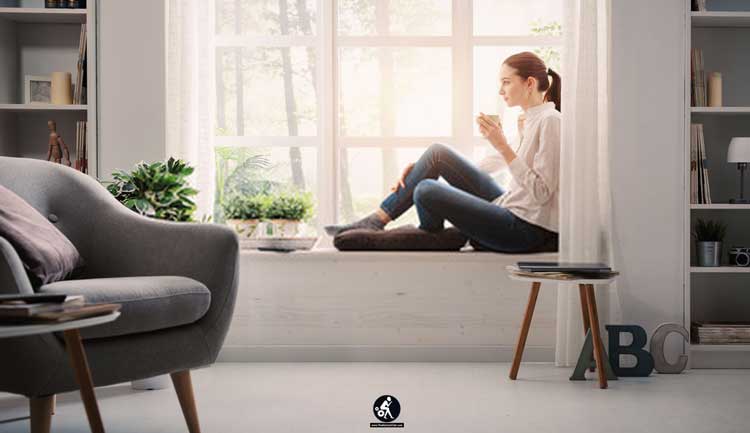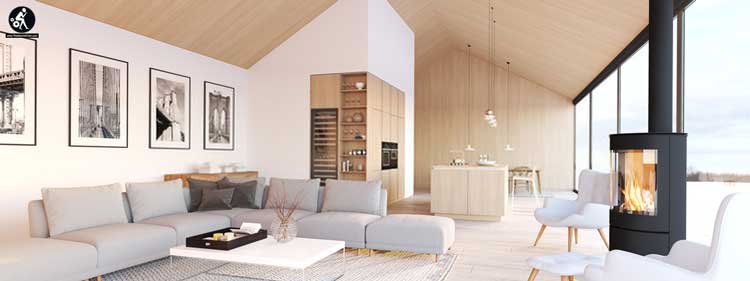In today’s fast-paced and busy society, stress is inevitably on the rise — in fact, 55% of Americans report experiencing stress daily, which is well above the global average of 35%, Time reports. It’s therefore all the more important that your home functions as a personal sanctuary that allows you to rest and recuperate away from the pressures of the modern world. With just a few simple design changes, you can create a serene and restorative home interior.
Serene Home Interior

Clean and declutter
Not only does clutter create physical chaos, but it also can interfere with your mental health and increase levels of stress and anxiety. Taking the time to clean, declutter and organize your home is one of the best ways to create a serene and relaxing space. You’ll also benefit from having less to clean and being able to easily find items whenever you need them. If decluttering is an overwhelming task, simply start by doing five minutes a day. Your efforts will add up over time. However, there’s no need to strip your home down too much. The Japanese philosophy of wabi-sabi — or “perfect imperfection” — is useful to keep in mind. As you declutter, be sure to pay attention to your surroundings, so you can find the right level of simplicity or abundance to suit your preferences.
Incorporate biophilic design techniques

Biophilia (meaning love of nature) has long been used in interior design to create spaces that are peaceful, uplifting, and better for mental and physical health, explains J. Fisher Interiors, an interior designer in Austin, TX. It involves the incorporation of various elements of the natural world, including, plants, natural light, natural materials, air and water. For example, place potted plants and trailing plants hanging from the ceiling around your home. Maximize natural light by keeping your windows clean and free from bulky blinds and curtains. Choose furniture and wall panels featuring natural wood grains, rattan and bamboo. In fact, research from Texas A&M University shows living in or near green or natural settings has a host of health benefits, including improved mood and cognition, decreased stress and anxiety, and overall improved well-being.
Choose a soothing color palette

Your choice of color palette is essential for determining the overall mood of your home. Bold and bright colors are energizing and invigorating, and won’t do much to lower your stress levels. On the other hand, muted colors are ideal for creating a serene and relaxing space. In particular, off-white, tan, soft green, blush, lilac and soft gray are a handful of gorgeous on-trend colors with the power to soothe your mood. Alternatively, soft yellow is a great option if you’re looking for a brighter restful color that emits both energy and warmth. And thanks to its association with the sun, yellow has been proven to spark feelings of joy and happiness within us.
The design of your home has a significant impact on your mood and well-being. By following these simple design tips, you can create your own oasis that can calm and restore you.



































Comments are closed.